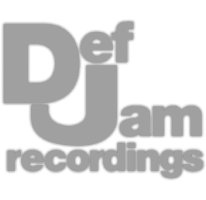Professional Analog Mastering.
Professional Analog Mastering.










At first, I was excited to try the dual mono mode of the linear phase EQ - it’s been around for a bit, but I’ve never used it.
Instead of creating M/S filters, you first insert the plugin in dual mono, click this circle with the dots, change it from left and right to mid and side channels, and now you have a linear phase mid/side EQ.
However, as I began creating some of the filters I usually do, I started hearing increased phase issues that became more pronounced the more I adjusted them.
As you can imagine, as I layered additional forms of processing and amplified quieter details, this kind of washing sound had a massive impact on the sound quality.
So for the time being, I’d recommend sticking to a stereo EQ.
For this track, I boosted a little of the kick and subs with a shelf, dipped around 250Hz to reduce its masking effect to higher frequencies - in turn making the track sound clearer, and I dipped some of this aggressive resonance that pops up around 1kHz.
Then, I added some clarity to the vocal’s 3rd formant, or the area where a lot of vowels and consonants have info, and ended up boosting that range by about 1.5 dB.
Lastly, a shelf on the high frequencies brought up some air and high-end details.
Nothing too complex, and you’ll need to adjust your filters to account for your track’s unique makeup, but this is a good starting point for most tracks.
Let’s take a listen and notice its subtle but beneficial impact.
Watch the video to learn more >
I was hoping to find a straightforward RMS compressor, but it looks like I’ll have to use very subtle compression instead. The multipressor has some RMS functionality, but honestly, I don’t want to look at it. I don’t think they’ve updated this thing in 20 years.
Also, I don’t want to deal with the expansion section, so it looks like the basic Compressor is the best choice. After testing mid/side compression, I ran into the same issue as with mid/side EQ - lots of phase interference and a generally bad sound.
Sticking with stereo compression, I went with the vintage opto compressor. Using a low ratio of around 1.5:1, a softer knee, a moderate attack of around 40ms, a release around 200ms, and auto gain off, I can achieve some very subtle compression.
It’s just enough to help control dynamics without making any audible changes to the timbre.
Since the effect on the sound is so subtle, let’s move on to:
Chroma Glow is newer - this was my first time trying it out and it’s honestly a great sounding plugin.
You get 5 models, 2 styles for each model, and you can bypass the effect below a certain frequency.
For this track I picked Modern tube and enjoyed the colorful option, but if you’re mastering I’d recommend either picking this model, or Magnetic - the others sound too aggressive for most situations.
Also, after having those phase issues with my mid/side filters during the EQ stage, I don’t really trust Logic’s mix amounts. If this plugin alters the phase at all, then that’s going to cause interference as soon as the original signal is blended in.
Instead, I kept the effect at 100% and used a low drive value to achieve just a little saturation.
Let’s take a listen to ChromaGlow being enabled.
Watch the video to learn more >
Other than limiting, Logic doesn’t have anything that maximizes the signal - by that I mean something that amplifies from the noise floor up while leaving peaks alone.
So, I’ll use parallel compression instead to achieve a dense sound, full of lower-level signal.
Again, I don’t want to use the wet/dry or mix since I’m hearing phase issues, so I’ll use a send, insert the compressor, and compress a good amount.
The type you pick is up to you, but I found that Vintage FET with a slightly longer attack had a nice punchy sound.
With it, I achieved about 20dB of attenuation, using a 16:1 ratio and a harder knee shape.
Once it sounded the way I wanted, I blended in the compressed signal with the original via the aux track’s channel fader.
Too much and the compression becomes audible, too little and it might as well not be there at all.
So let’s listen to the parallel track being enabled, and notice how it impacts the overall master as I adjust its level.
Watch the video to learn more >
I really enjoy Logic’s vintage EQ collection - especially the Pultec Emulation.
It’s great for that classic Pultec Low-End trick in which you boost the lows, then attenuate the same range.
It creates a boost in the sub and lows and a dip to the low mids, similar to what I did with the first EQ I used.
Then, a subtle boost to the high mids will bring the vocal forward.
The filters are very gradual, so odds are the entire frequency response is affected, so use low settings and listen intently when using this one.
Additionally, it has a nice saturation effect - a little goes a long way when mastering, but fortunately, it’s subtle, so you can use up to about a value of 2 before it's too noticeable.
Let’s take a listen.
Watch the video to learn more >
So, I’ll be honest, I really don’t like either one of Logic’s Stock limiters - simply put, I think they sound bad and completely ruin the transients.
But, if you don’t have another option, you can use a combination of the Adaptive Limiter with the traditional limiter to get a better result.
First insert the adpative limiter - turn the DC offset off, and set lookahead to 20ms.
Achieve a couple of dB of attenuation at most - hopefully with the 20ms of lookahead, the processor won’t alter the peaks too much.
Then, use the other limiter and amplify the signal by a couple of dB. Since it peaked at 0dB with the adaptive limiter, we should achieve as much attenuation as we amplify.
Use a lower lookahead and listen carefully for distortion, since this plugin will absolutely introduce that quicker than expected.
Again, I’m not a fan, and I’d recommend trying a free limiter like Wavebreaker instead, but, let’s check out these 2 limiters.
Watch the video to learn more >
So as soon as I click the mastering text, the plugin will analyze the signal. That said, I want to disable anything I don’t want in the chain before I do this.
So, I’ve bypassed my limiters and the tube EQ.
With the assistant open, and after it analyzes the signal, the plugin will create a new frequency response based on some preset standard running behind the scenes.
You can adjust the amount, and switch characters which has a subtle to moderate change on the track’s timbre.
If you want, you can enable the custom EQ section and introduce some very gradual shaping to the response.
To the right, we have the loudness dial, which seems to introduce both upward processing and limiting, with the cap always set to -1dBTP.
The excite button adds harmonics to the high frequency range, and we also get a loudness meter.
Width acts like a mid/side pan, in which we can change the amplitude of the mid and side images, while observing our correlation meter which is ideally more positive or correlated between the left and right channels.
Lastly, I noticed that bypass strangely introduces phase cancellation. And loudness compensation doesn’t really fully compensate the loudness.
So, in both instances, the effect will sound better on than when off, but that’s only because it’s not giving you an accurate depiction of the signal when it's off.
Just something to keep in mind.
I’m not going to share my personal thoughts on it, but let’s listen to the chain created with the stock plugins, and then the chain finished with this assistant, again with the limited and tube EQ off, since this plugin is handling that aspect.
Let me know in the comments if you have a preference.